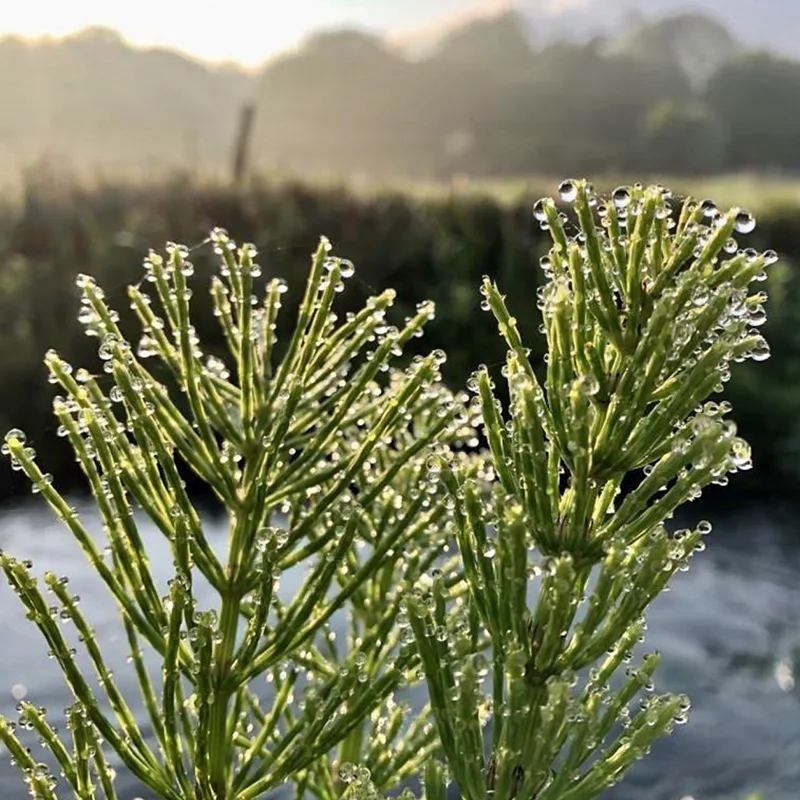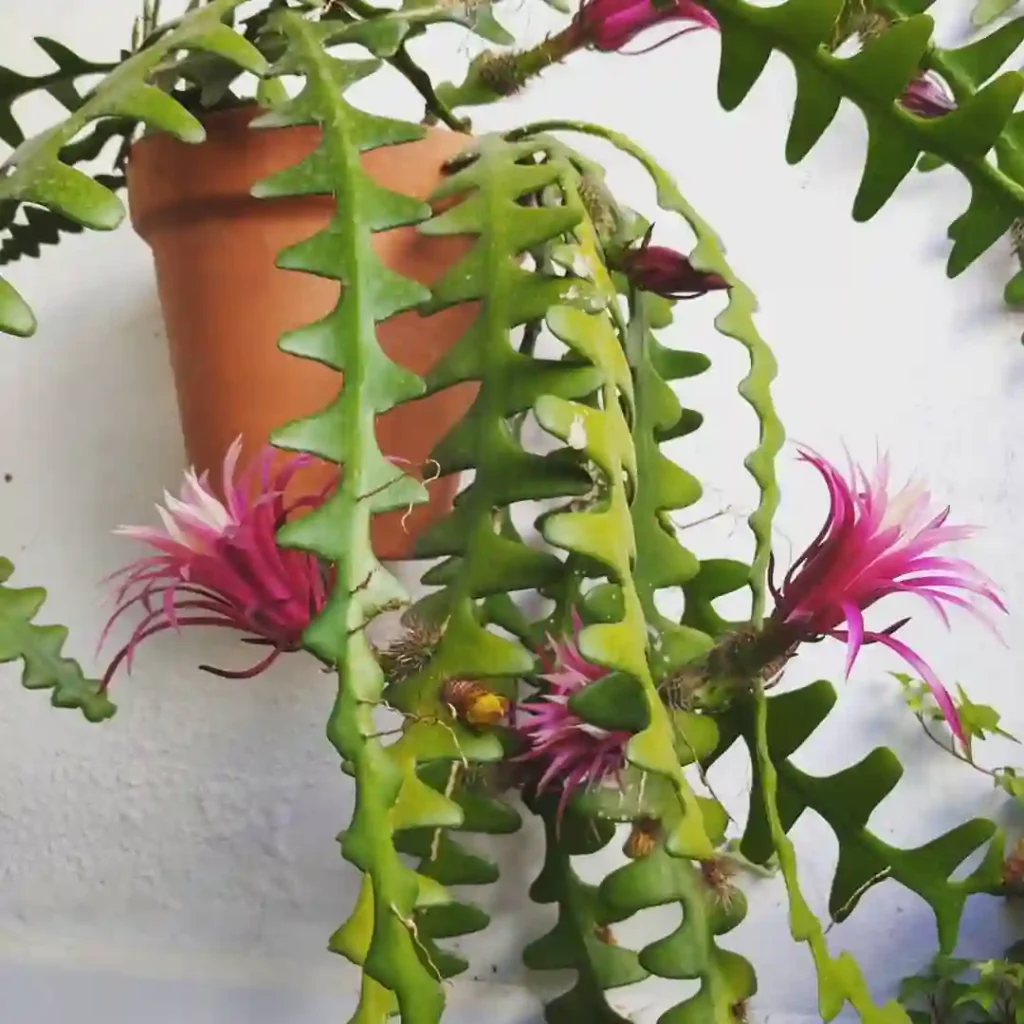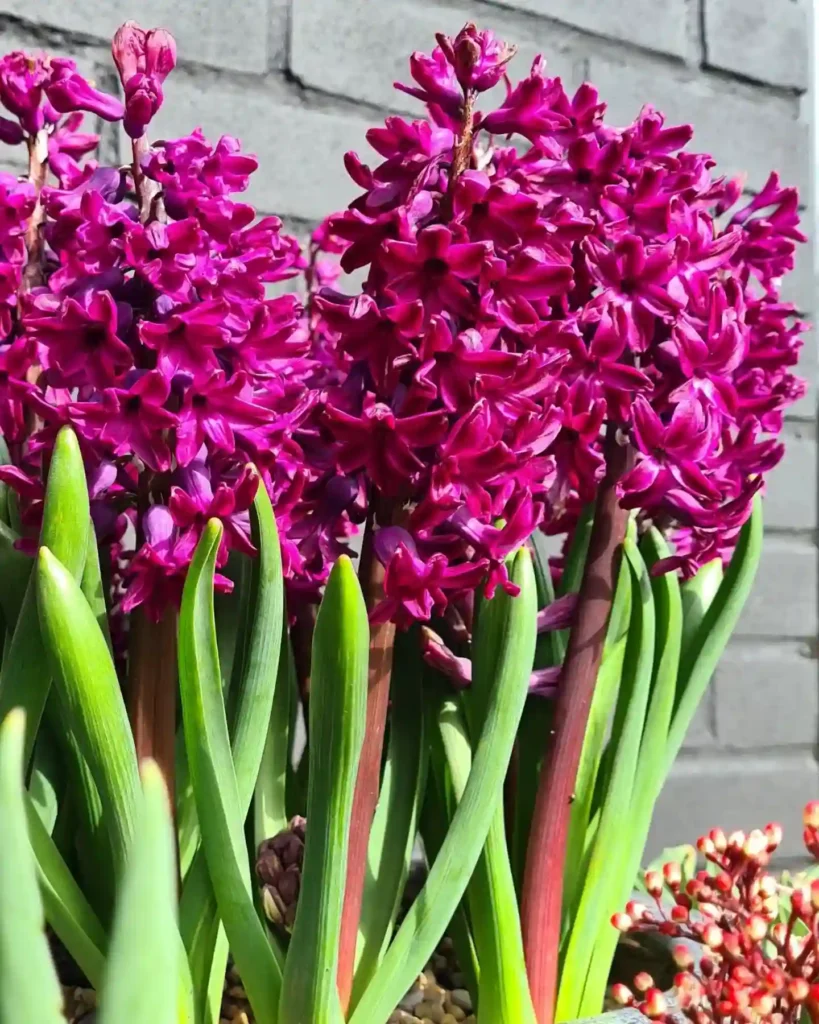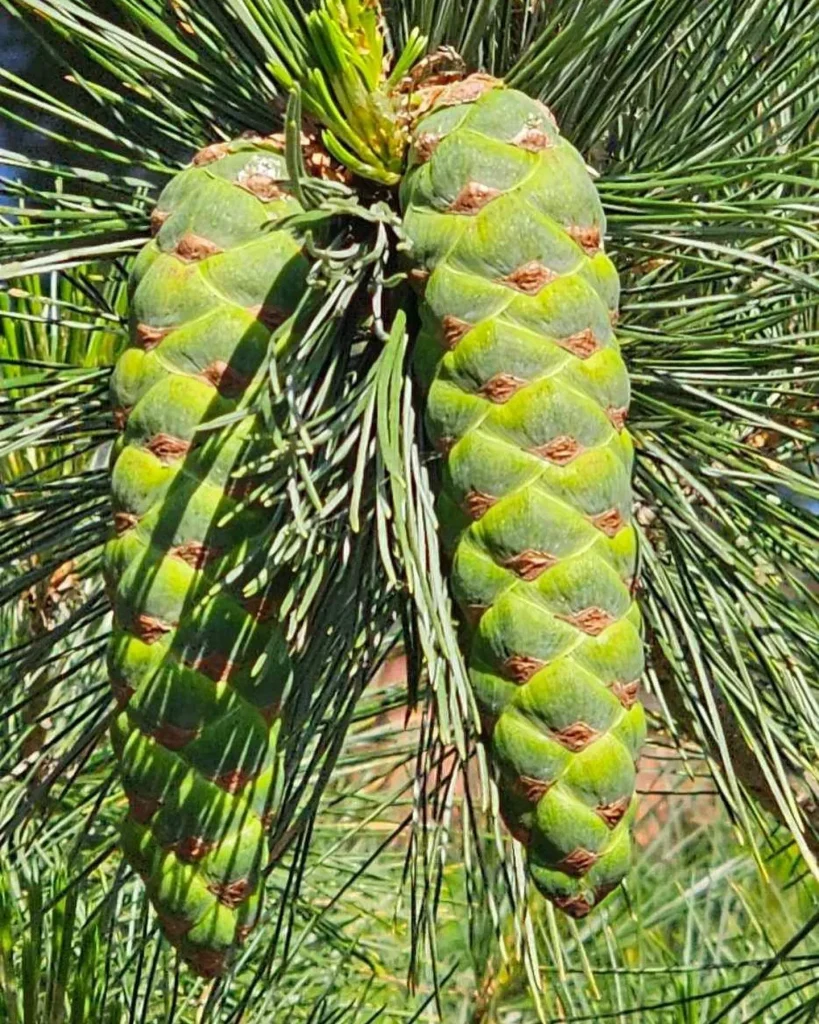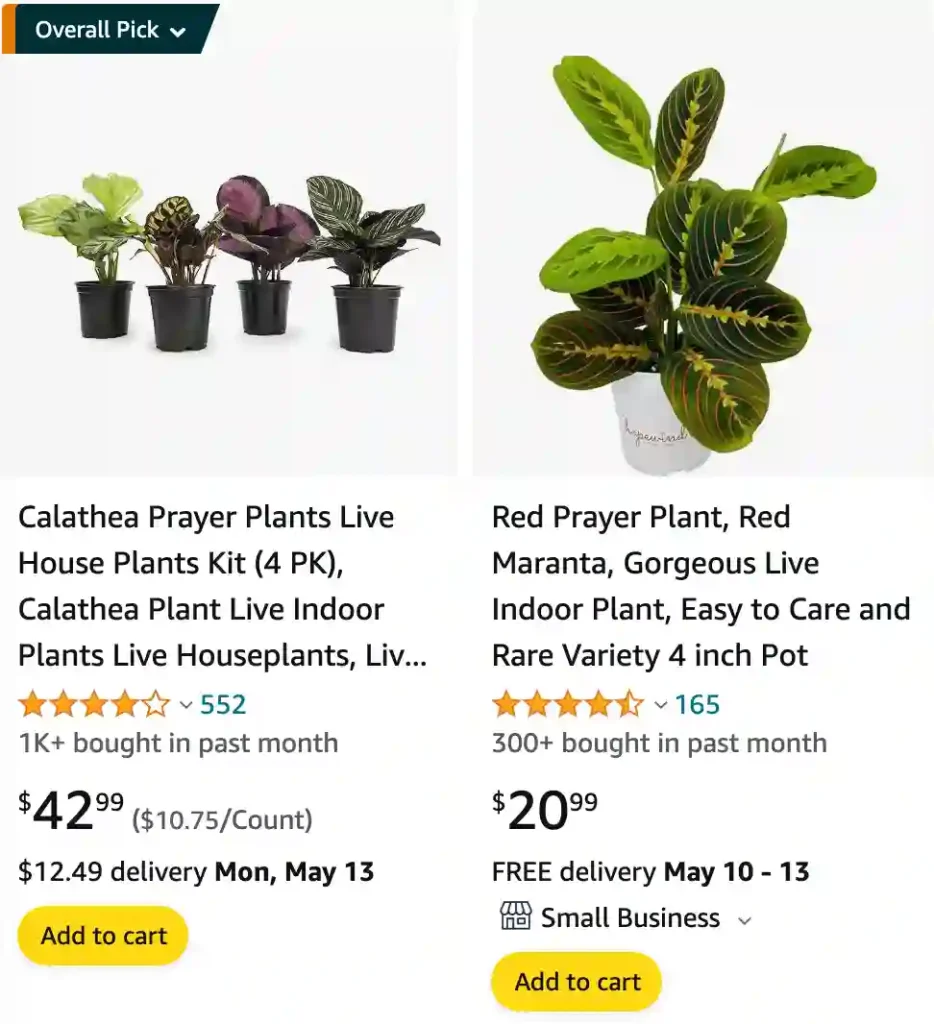
What does a prayer plant look like?
My prayer plant is like a living piece of art! The leaves are oval-shaped and a rich, velvety green. But the coolest part is the veins – they run along the whole leaf like a burst of sunshine, a lighter green or sometimes even a pinkish-red depending on the variety. The underside is a whole other story – it’s usually a deep burgundy, which always surprises me when I peek underneath. And that’s where the “prayer” part comes in. At night, the leaves slowly rise up as if in prayer, showing off that beautiful contrast in color. It’s like a little nighttime show happening right there on my windowsill.
Where to buy a prayer plant?
I found my prayer plant at a local plant nursery, and it was such a delightful experience! There’s something special about being surrounded by all those green beauties. The staff was knowledgeable and helped me pick out the perfect plant for my space. If you’re looking for a prayer plant, I’d suggest checking out local nurseries first. They often have a great selection, and you can see the plants up close before bringing one home. Plus, supporting local businesses feels good! If you don’t have any nearby nurseries, you can always try online plant shops, but there’s just something magical about picking out a plant in person.
How often to water prayer plant?
I’ve learned the hard way that keeping my prayer plant happy means playing a bit of a guessing game with watering. It doesn’t like completely drying out, but soggy soil makes the leaves droop dramatically. These days, I stick my finger in the pot about once a week. If the top inch or two feels dry, it’s watering time! Sometimes it goes a bit longer between drinks in the winter, but during the summer heat, I might even water it twice a week. The leaves themselves will also give me clues – they curl up a bit when they’re thirsty. It’s all about finding that sweet spot where the soil stays slightly moist but the roots aren’t sitting in water.
How to revive a prayer plant?
Oh man, I’ve totally been there with a sad, droopy prayer plant. Once, I left mine for a weekend trip without a good watering, and let’s just say it wasn’t happy when I got back. The leaves were all crispy and curled at the edges. Luckily, these guys are pretty resilient. What worked for me was a humidity spa day! I filled a pebble tray with water and placed my pot on top, making sure the bottom wasn’t actually touching the water. Then, I stuck a clear plastic bag over the whole thing, creating a little greenhouse effect. I misted the leaves a couple of times a day and kept it out of direct sunlight. After a week or so, I started to see new growth and the leaves perked back up. It took some patience, but it was definitely worth the effort!
Why is my prayer plant turning yellow?
Ugh, the yellow leaves! It can be so frustrating trying to figure out what my prayer plant is lacking. Sometimes it feels like they’re just throwing a tantrum for no reason! I’ve noticed a couple of things that seem to trigger yellowing. One is definitely forgetting to water. If the soil gets too dry, those vibrant leaves start to lose their color. But overwatering can do the same thing, especially if it leads to root rot. Another culprit I’ve discovered is tap water. Apparently, prayer plants are fussy about all the minerals in it, and that can show up as yellowing leaves. Now I try to use filtered water or rainwater whenever I can. Just keep an eye on your watering habits, check the moisture in the soil, and maybe switch up your water source and see if that helps!
Does prayer plant flower?
You wouldn’t believe it, but my prayer plant actually surprised me with some flowers a while back! I never thought I’d see it happen indoors. They were these tiny little things, tucked away at the base of the plant, and at first I thought they were just new leaves coming in. But then they unfurled and I saw these delicate white blooms, kind of shaped like snapdragons. They weren’t the most showy flowers in the world, but it felt like a little reward for taking good care of my plant. Unfortunately, they didn’t last very long, but it was still pretty cool to witness! I guess I must be doing something right for it to flower even indoors.
Why is my prayer plant drooping?
There are a couple of things that could be making your prayer plant droop. The most common culprit is probably underwatering. These guys like their soil to stay consistently moist, not soggy, but definitely not bone dry either. Stick your finger in the top inch or two of soil – if it feels dry, it’s watering time!
Overwatering can also cause drooping, though. If the soil feels constantly wet and mushy, the roots might be rotting. In that case, you’ll want to take your prayer plant out of the pot, check the roots for any brown or mushy bits, and repot it with fresh, well-draining soil.
Lighting could also be an issue. Prayer plants prefer bright, indirect light. Too much direct sun can scorch the leaves, and not enough light can make them weak and floppy. Try moving your plant around to see if a different spot perks it up.
Good luck figuring out what’s ailing your prayer plant! With a little detective work, you should be able to get it happy and healthy again.
How to propagate a prayer plant in water?
Propagating my prayer plant in water was actually pretty fun and rewarding! Here’s what I did:
First, I grabbed some sharp, clean pruning shears and picked a healthy stem with a few leaves. I looked for a “node” – that’s the little bump on the stem where new growth happens. I cut about an inch below the node, making sure the cut was nice and clean.
Next, I found a glass jar or vase – something clear so I could keep an eye on things. I filled it with room temperature water, ideally filtered or rainwater if I had some on hand. Then, I carefully placed the stem in the jar, making sure the node was submerged just below the water line.
I placed the whole jar in a spot with bright, indirect light. Direct sun can be harsh on new growth, so I kept it on a shelf a few feet back from the window. Then came the waiting game! I changed the water every few days to keep it fresh and prevent any bacteria growth.
After a couple of weeks, I started to see tiny white roots sprouting from the node, which was super exciting! I just kept topping off the water level and waiting patiently. Within a month or so, I had a healthy little root system established. That’s when I knew it was ready to be transferred to a pot with soil and start its life as a new prayer plant!
Is a prayer plant toxic to cats?
Absolutely not! That’s one of the reasons I love my prayer plant so much. Unlike some houseplants that can be dangerous for curious felines, prayer plants are completely safe for cats. No worries if your kitty takes a nibble on a leaf – it won’t cause any harm. This is especially important for me since my cat, Mittens, loves to explore every corner of the house, including my plant shelves. With a prayer plant, I can relax knowing she can’t accidentally poison herself if she decides to take a taste test. It’s a win-win for both of us – a beautiful plant for me to enjoy and a safe environment for my furry friend.
Why are my prayer plant leaves curling?
There are a couple of reasons your prayer plant leaves might be curling up. The most likely culprit is underwatering. These tropical plants love consistently moist soil, not soggy, but definitely not dry either. Stick your finger in the top inch or two of soil – if it’s dry, it’s watering time!
Dry air can also cause curling leaves. Prayer plants thrive in humid environments, and our homes tend to be drier, especially in winter with the heater on. You can try misting the leaves regularly, using a pebble tray with water, or grouping your prayer plant with other humidity-loving plants to create a mini humid microclimate.
Less likely, but still possible, is that your plant is getting too much light. Prayer plants prefer bright, indirect light. Too much direct sun can scorch the leaves and cause curling. Try moving your plant to a spot with more filtered light and see if that helps.
Is calathea a prayer plant?
That’s a common misconception! Calatheas, like my own plant, are often called prayer plants, but they’re actually a different genus closely related to true prayer plants. Real prayer plants belong to the genus Maranta. There are some key differences between the two.
The giveaway for a true prayer plant is how the leaves move at night. They fold upwards, like hands clasped in prayer – hence the nickname. Calatheas, on the other hand, might have some slight movement overnight, but their leaves won’t do the dramatic folding thing.
Even though they’re not technically prayer plants, I still think Calatheas are gorgeous with their beautiful patterned leaves. But it’s good to know the difference!
Why does my prayer plant have brown tips?
Ah, the crispy tips! Those brown edges on your prayer plant are a common frustration, but luckily there are a few things it could be and easy fixes to try.
The most likely culprit is underwatering. Prayer plants love evenly moist soil – not soggy, but definitely not bone dry either. These guys are drama queens and will show their thirst with brown tips on the leaves. Stick your finger in the top inch or two of soil. If it feels dry, it’s time to water!
Another possibility is low humidity. Prayer plants are tropical rainforest natives, so dry air can be a real drag for them. This is especially true in winter with the heater blasting. You can try misting your plant regularly with filtered or rainwater, using a pebble tray with water near the pot, or grouping your prayer plant with other humidity-loving plants to create a little humid haven.
Less likely, but something to consider, is that your plant might be getting too much fertilizer. Prayer plants are light feeders, and too much fertilizer can build up in the soil and burn the edges of the leaves. If you’re fertilizing regularly, ease off for a while and see if that helps.
Finally, it’s a good idea to check your watering habits. Overwatering can also lead to brown tips, especially if it causes root rot. If the soil feels constantly wet and mushy, you’ll want to take action. Unpot your prayer plant, check the roots for any brown or mushy bits, and repot it with fresh, well-draining soil.
Is prayer plant good for indoor?
Absolutely! Prayer plants are fantastic houseplants for several reasons. Here’s why I think they’re perfect for indoor living:
First, they’re stunning to look at. The vibrantly colored, patterned leaves add a touch of the tropics to any room. They come in a surprising variety too, from the classic Maranta leuconeura with its green and burgundy foliage to the dramatic, dark-veined Maranta Lemon Lime. There’s a prayer plant out there to suit any style.
Beyond their good looks, prayer plants are relatively easy to care for indoors. As long as you can provide them with bright, indirect light, consistent moisture (but not soggy soil!), and some extra humidity, they’ll thrive. They don’t require repotting frequently and are generally free of pests.
Plus, they’re non-toxic to both humans and pets, which is a major plus for me as a cat owner. No worries if my curious kitty decides to take a nibble on a leaf!
Overall, prayer plants are beautiful, low-maintenance additions to any indoor space. They purify the air and add a touch of life and personality to your home. What’s not to love?
If i die, water my plants!
